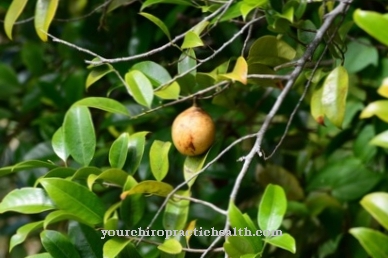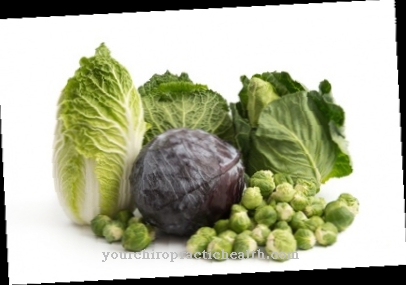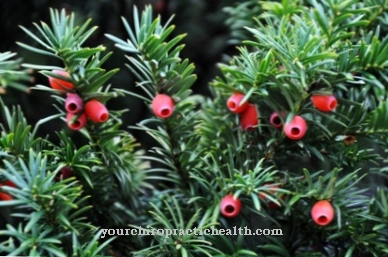The Creeping couch grass belongs to the genus of couch grass. The root of the plant can be used to treat various ailments.
Occurrence & cultivation of the couch grass

The sterile shoots in particular are very tall. The bare stalks of the plant are either upright or curved downwards. The green leaves have blue tires that can be wiped off. The leaves reach a length between 6 and 30 centimeters and a width of 3 to 10 millimeters. The inflorescences of the couch grass are slender and have a length of 5 to 20 centimeters. In the second year the plant produces around 50 seeds. In Central Europe, the common couch grass blooms between June and August.
The creeping couch grass is native to Europe, where it is often a nuisance for garden lovers and farmers. It is often considered an undesirable weed. Further growth areas can be found in Australia, South America and the north of Asia. The couch grass thrives best on meadows that are rich in nutrients, arable land, roadsides as well as on banks and overgrazed pastures.
Effect & application
Although the couch grass is considered a weed, it also has positive properties. The rhizomes of the plant are used in northern Europe as fodder, which is rich in nutrients. Eastern Europeans even appreciate the plant as a food and eat it as a side salad or a syrup-like substitute for coffee. In addition, the common couch grass is used by naturopathy as a medicinal herb against various ailments and diseases.
The dried roots and their runners are used here. The positive ingredients of the plant include mucilage, triticin, mineral salts such as potassium, iron, saponins, silica, essential oils such as thymol and carvacrol as well as vitamins A and B. They enable the common couch grass to have a diuretic and expectorant effect. The root, rhizome and flowers can be collected between March and August. Its components can be used to make extracts, essences, powders, cold extracts and decoctions.
To use the diuretic effects, it is advisable to take the couch grass in the form of a tea. The plant roots are used for this purpose. The rhizomes, which are brewed with boiling hot water, allow harmful germs to be removed from the urinary tract in a short time. Furthermore, unpleasant symptoms when urinating such as burning sensation are alleviated. The tea is prepared as a decoction. Two teaspoons of the root are mixed with one cup of water. The user lets the water boil for 5 to 10 minutes. After draining, a cup of tea can be taken twice a day.
A tea mixture with the couch grass is also useful for acne. The user mixes 20 grams of couch grass with 10 grams of horsetail, 10 grams of pansy and 10 grams of nettle. He then pours two heaping teaspoons of this mixture over a quarter of a liter of boiling water. Strain off after a steeping time of 10 minutes. You can then drink a cup of tea three times a day.
A tincture can also be made from the root of the couch grass. Some finished preparations also have couch grass root as a component. Fresh couch grass is also used in homeopathy. There the plant is set with alcohol with a content of 90 percent. On the other hand, 30 percent alcohol is used for dilution. The potentiation of the remedy is between D 4 and D 5.
Importance for health, treatment & prevention
The couch grass has the positive property of having an anti-inflammatory effect in diseases of the urinary tract such as cystitis or the intestine. This is due to the plant's heterogeneous biopolymers, which have enveloping and anti-irritant protective effects. The mucilage in turn has a detoxifying and blood sugar lowering effect. They also strengthen the human immune system.
Folk medicine uses the common couch grass as a remedy for gallbladder and liver problems, urinary retention, stomach and intestinal inflammation, gout and rheumatism. Other areas of application are rickets, menstrual cramps in women, as well as bleaching and skin problems such as acne. In naturopathy, couch grass is also used against constipation, stone diseases such as gallstones or kidney stones, and orange peel (cellulitis). Furthermore, the consumption of the plant is considered useful in jaundice, an enlarged prostate, prostatitis or intestinal ulcers.
The Federal Institute for Drugs and Medical Devices also recommends taking the couch grass. The institute recommends using the roots as part of a flushing treatment if the patient suffers from inflammation of the lower urinary tract. The medicinal herb is also considered to be helpful for the prevention of kidney gravel.
There are only a few known contraindications to the use of the couch grass.However, anyone who suffers from cardiac or renal insufficiency or severe edema (water retention) must refrain from taking the plant. Pregnant and breastfeeding women are advised to consult their doctor before using the product. The same applies to high blood pressure.
























.jpg)



